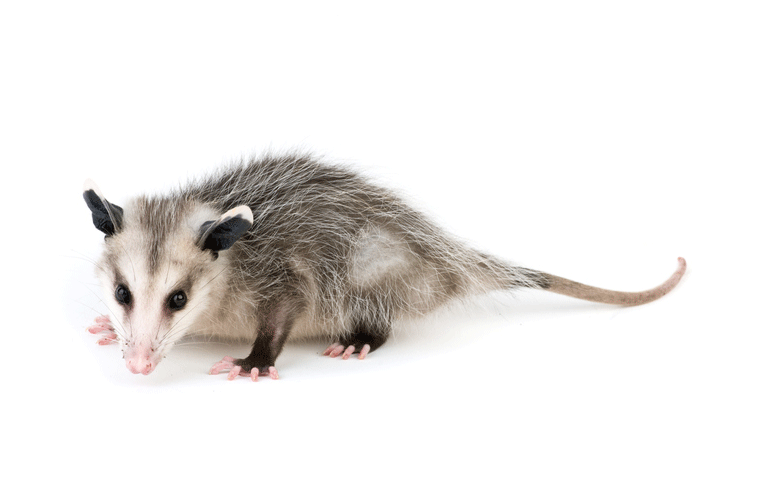OPOSSUMS

Physical Characteristics: Opossums are the only marsupials found in North America. They are easily identified by their long tails, pointed faces with hairless ears and tails that aid them in climbing. Opossums are normally gray but extreme temperatures and diet can cause their coats to change from gray to red to brown. They grow to approximately the size of a large house cat, ranging from 26-28” in length and can weigh up to 15lbs.
Diet: Opossums will usually stay in one area as long as food and water are easily available. They are omnivores, consuming just about anything from rodents, insects, birds, eggs, frogs, plants, fruit and grains, but prefer human food, table scraps, dog food and cat food.
Breeding: Having two litters per year from Feb-Oct, ranging from 5-13, they quickly reproduce and can become a nuisance in areas where they encounter humans.
Habitat: Opossums have adapted their lifestyles to locations near wooded areas and are often found in urban areas. Opossums take cover in abandoned dens of other animals such as raccoons, skunks or foxes, they are lazy animals who do not build their own dens. They commonly take cover in sheds or old buildings, brush piles, and hollow trees and other areas sheltering them from the elements. Opossums are natural climbers and may use trees on your property to access the roof and attic of your home and can take up residence in open wall voids between the insulation, unused and dark basement spaces, or garages and sheds.
Inspections: The first thing to do in wildlife control is a proper inspection. We will determine if opossums are the problem. Evidence of opossums at your location include: damage to the building exterior, dissappearing pet food, animal noises and loud scratching, and one characteristic that is a tell-tale sign between an opossum and other rodent is their unpleasant odor.
Trapping: Humane trapping and exclusion measures will be taken to keep opossums from returning to your property or in your home.

